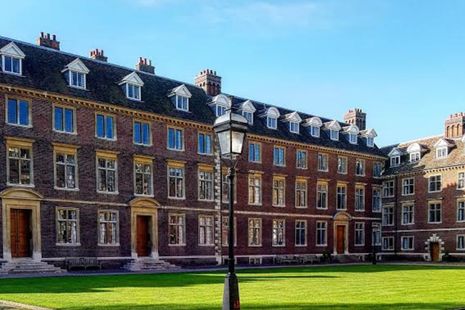Catz announces plans for over 100 solar panels on roof
The college claims the plans will not cause visual disruption to the historic site

St. Catharine’s College has announced plans to fit 114 solar panels on the roof of the historic college.
The panels will be on the 1960s E/Gostlin building, with the College claiming that the building’s high roof makes it well-suited for solar energy.
A heritage statement submitted alongside the planning application acknowledged the potential for visual disruption by the project, but stated that the panels “will not be visible unless directly above the building”.
This initiative forms part of the college’s wider plans to achieve net zero carbon emissions by 2040. The proposed solar panels are set to generate 44,700 kWh of electricity annually, potentially cutting the College’s carbon footprint by 7,345 kg of CO₂ each year.
The application states that all of the electricity generated by the panels would be used by the College, rather than be outsourced.
This move also follows a major refurbishment of the building completed two years ago, which saw the removal of gas appliances and upgrades to lighting, heating, and air conditioning systems.
This also comes as several colleges move toward generating sustainable energy on their grounds, with King’s College installing more than 400 solar panels on the roof of their iconic chapel last year.
The decision to place solar panels on the chapel roof generated significant controversy, with Historic England opposing the change, claiming that such panels “would look out of place,” and “would be a stark contrast to the existing roof”.
The panels were also criticised by University academics, including Gonville & Caius fellow David Abulafia who claimed that the panels were “just another example of virtue signalling,” and would look out of place on the “most magnificent building” in either Cambridge or Oxford.
 News / SU reluctantly registers controversial women’s soc18 December 2025
News / SU reluctantly registers controversial women’s soc18 December 2025 News / CUP announces funding scheme for under-represented academics19 December 2025
News / CUP announces funding scheme for under-represented academics19 December 2025 Features / Should I stay or should I go? Cambridge students and alumni reflect on how their memories stay with them15 December 2025
Features / Should I stay or should I go? Cambridge students and alumni reflect on how their memories stay with them15 December 2025 Fashion / The art of the formal outfit 18 December 2025
Fashion / The art of the formal outfit 18 December 2025 News / Dons warn PM about Vet School closure16 December 2025
News / Dons warn PM about Vet School closure16 December 2025










